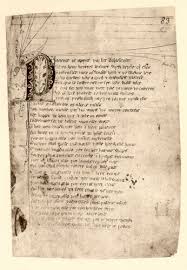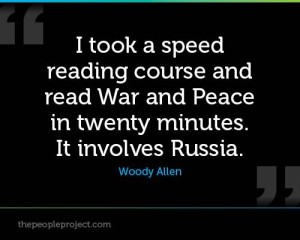
If you wish to read the previous parts (which should place this into a semi larger context): here are Part I, Part II and Part III.
A similar division of aspect, as found in the previous parts, is illustrated by the final two poems in each quartet. Sir Gawain and Troilus move to achieve what the previous poems had not accomplished, yet both seem to fall short only to evince the impediment of human limitations or shortcomings. A discussion of these final poems will also importantly conclude the interpoetic portion while explicating the intrapoetic unity that defines the two quartets as halves of a complete whole. As Criseyde, Troilus, and Sir Gawain take center stage in a stark comparison of two quite different poetic styles and matters, the entirety of Cotton Nero A.x along with Chaucer’s earlier poems will join them to further demonstrate their importance which could not otherwise have been evident from looking at the constituent parts.
Chaucer builds up towards Troilus and Criseyde’s zenith long before the narrative begins. The dream visions of Duchess, Fame, and Parliament are simply just that, dreams. The Black Knight, much like the tercels, is unable to achieve love, and the dreamer is unable to return at a later date to find the result of their labors. White is dead, and the formel refuses to accept either suitors, leaving the dreamer, and consequently the reader, in a state of suspense. As the poems end there remains the question of whether the Black Knight will remain faithful to his memory of White, or if he will in fact move past his mourning and learn to love another, or if the formel will indeed make a choice within the year, and if the tercels will be patient and seek her again when the time comes. Fame also ends in an ambiguous tone. The dreamer is left with the image of “a man of gret auctorite,” unable to identify him, or even what about him makes him seen as though he has authority. Perhaps the greatest indication of authority is the subject of the poem itself, fame. The man is surrounded by many people, apparently seeking to see or perhaps hear him, implying they had heard him, or of him, before. This would seem reasonable considering the conversation the narrator had had with the eagle beforehand concerning fame and rumor. Yet, the knowledge that the man posses is withheld from the dreamer, essentially leaving the definition of fame incomplete despite the multiple attempts to define it throughout. The last example, a physical image of fame, is not granted. Troilus and Criseyde finishes the conversation that the other three poems commenced, withholding nothing from the audience, staging reality, but its end suggesting that reality is not necessarily as satisfying once achieved.
Desire depends on lack – on something not in possession. Desire fulfilled is desire suspended. In Troilus and Criseyde desire is ultimately fulfilled, unlike the desire of the previous three poems where the desire for a defined conclusion is never achieved. Troilus and Criseyde consummate a love that could only be fancied by the Black Knight or the tercels. Also, their love is not guided by convention, but by genuine human emotion, a type of emotion characteristic of life experience. It is powerful and passionate, even if only momentary, often times one-sided, and as the two come together a real affair occurs, for better or worse. Their love, however, is tainted by human misunderstanding, or incapacity. The reader, through the couple, is made to understand and feel love, but only to have it suspended and destroyed, evidencing its ethereal nature , further demonstrating that all earthly things are transitory and basically human, with the implication of the selfish nature of their love . Thus Criseyde cannot be fully blamed for her betrayal, just as Troilus cannot be judged for his regard towards Criseyde as existing solely to fulfill his whims. Criseyde’s love, and later perceived betrayal were only magnified by his own shortcomings, namely his selfish methods of love that relied upon his ownership of Criseyde’s emotions and person. It was not Criseyde’s lack of love for Troilus that drove her to Diomede, just as Troilus’ love for her was not deficient when he chose to remain silent before the Parliament. Everything human, including love, is fallible.
Human realization of incompetence is the first step towards improvement, and also understanding that perfection is unreachable despite the best of efforts. Sir Gawain applies what the previous three poems of Cotton Nero A.x attempted to teach, and essentially becomes the most theological piece in the entire manuscript. The Maiden in Pearl instructed the Dreamer how to theoretically attain salvation through penance and by leading a spiritual life. Although the Dreamer does not fully understand his lesson in the end, the poem does not allow a glimpse into the rest of his life to see how he may try to incorporate what he had learned. Purity is a retelling of biblical stories that demand the characters sin only to highlight the instruction they will receive, and demonstrates the power of God. Patience, too, is more concerned with the forgiveness and patience of a benevolent God to focus on human trial, and Jonah, being the chosen voice of God, is hardly a typical human, despite his representation as “everyman.”
Sir Gawain exemplifies a typical Christian, and when he encounters temptation, despite his good intentions and great sense of decorum, he succumbs. This is the story of a man who finally realizes all the lessons previously taught. However, his failure to attain perfect spirituality, much like Troilus’s and Criseyde’s unfulfillment of perfect love, is not to be counted against them, just as God chose not to punish Jonah or the Ninivites for their transgressions. Part of being human is the potential to err, and the perpetual inability to fully comprehend. Even as he withstands the temptations of the flesh brought upon him at the castle, his greatest vice is his lack of humility. Yet the charm Gawain exhibits for the audience is not in his superfluous speech, or his courtly mannerisms, but in his total representation of everyman that no other character in the manuscript has attained. He is the embodiment of the common human, and as he embarks on his journey that will inevitably lead to certain danger, he never fails to err in the familiar ways, confused about his ultimate trials, and almost oblivious to subversively perilous situations, in effect depicting the struggle concerting the human soul each day. As he remains before the Green Knight, bare necked and awaiting the equivalent of the Day of Judgment, it becomes apparent that he has not in fact learned his lesson, and cannot even accept the consequences as just for his actions, choosing to blame the tempters instead of realizing his own choice in the matter. Nevertheless, with a slap on the wrist, or more appropriately, a nick on the neck, he is forgiven, and sent home. The Green Knight’s actions echo the benevolence of God in earlier poems, accepting human nature, and treating mankind as a hoard of errant children. This instruction of man also serves as a reassurance for the reader, allowing him to understand that an impossible perfection is not what is expected, but rather a willingness to learn, along with some staunch perseverance.
Nevertheless, the Pearl poet chose to create a different type of perfection for Sir Gawain that is unreachable for the main character, and subsequently mankind. The divinity attained through the numerical design of the poem is directly related to the Divine Proportion, a number that holds together the entire manuscript and can by this point be easily identified as a recurring theme, and consequently a constant reminder to the medieval reader about the greater purpose of the text. The most prominent display of the Divine Proportion is depicted in the extraordinarily detailed description of Sir Gawain’s shield, and shall remain within focus throughout the story, expanding towards infinity through the catalog of fives that ascends from the trivial to the eternal, much like the manuscript as a whole outlines humanity in terms of the divine, from elevating seemingly simple peonies in Pearl to reappearing strategically in Patience and Purity. Interestingly, much like Pearl, Sir Gawain is comprised of 101 stanzas, a number that signals a return to prime numbers, used primarily to symbolize a completion or unity which would only be perceived as potentiality elsewhere. It is this numerical design that lends the much needed unifying aspect to the manuscript that would otherwise be a compilation of works that may or may not be perceived in relation to one another except for their appearance together.
The manuscript is divided in several ways and to better understand the divisions it is important to note the number of lines in each poem: Pearl has 1212 lines, Purity 1812, Patience 531, and Sir Gawain 2531. If the numbers are rounded off, the manuscript can be divided in halves – Pearl and Purity comprise the first 3000 lines, and Patience and Gawain, the latter. If the 6000 lines of the whole manuscript are divided by the 3700 lines of Pearl and Sir Gawain combined, they would just about equal the same 3700 lines divided by the 2300 lines of Purity and Patience, which is the Divine Proportion. Essentially, the higher meaning of this can be viewed in terms of infinite expansion, the infinite pattern that is found in nature, and is attributed to divine creation due to its absolutely perfect state. Throughout history the Divine Proportion has been observed to evoke emotion or aesthetic feelings. It has been used in architecture since before it was even fully understood. Within literature, philosophy, physics, and mathematics, it i has been associated with the concept of universal unification. Of course this is only an absolutely simplified version of the intricate numerical design of the exquisitely complicated Cotton Nero A.x, but it depicts enough to demonstrate the unity of the four poems that transcends words, and language, despite the amazing alliteration maintained throughout.
Essentially both of these poets have created works that serve as a reminder of the duality of mankind, preserving a delicate balance between the spiritual and worldly. Throughout these eight poems a mirror is held up to man to illustrate a propensity for error and offer reassurance that human fallacy, whether towards each other, or in relationship to God, is a part of being human, and despite the most sincere redress, perfection is unattainable; perseverance is all that remains.


